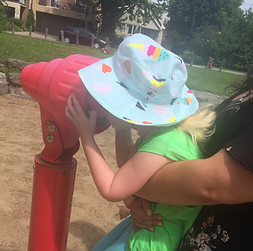
What Does STEM Mean?
STEM stands for science, technology, engineering, and mathematics. These four domains are highly interconnected, with learning in one domain leading to (or even requiring) learning in one or more of the other domains. Although some people question whether young children should be learning about STEM, a growing body of research suggests that learning about STEM in the early years builds a solid foundation for more formal STEM education.
What Does STEM in the Early Years Look Like?
STEM is a natural part of children's daily lives as they ask questions, explore their surroundings, and figure out how things work. Early childhood STEM learning experiences (or activities) typically include two or more of the four domains. In most instances, the learning resources on this site include tips for incorporating all four domains into children’s play. When educators, parents, and caregivers intentionally consider the STEM domains while supporting children’s play, they help to build the foundations for science (developing process skills), technology (using tools of any sort), engineering (acquiring habits of mind), and mathematics (strengthening spatial reasoning and number sense).
Why is Play Important?
The philosophy of play-based learning emphasizes the role of children’s interests. Because learning experiences arise from children’s questions and explorations instead of from formal lessons or a prescribed curriculum, the goal for STEM in the early years is to encourage the development of skills and habits of mind rather than to teach content. Some content learning still happens organically as children investigate their surroundings.

Science: observing an insect

Technology: using a latch to close a gate

Math: Arranging pine cones by length (seriation)

Technology: using a telescope to see faraway objects

Engineering: problem solving how to tow a wheelbarrow
